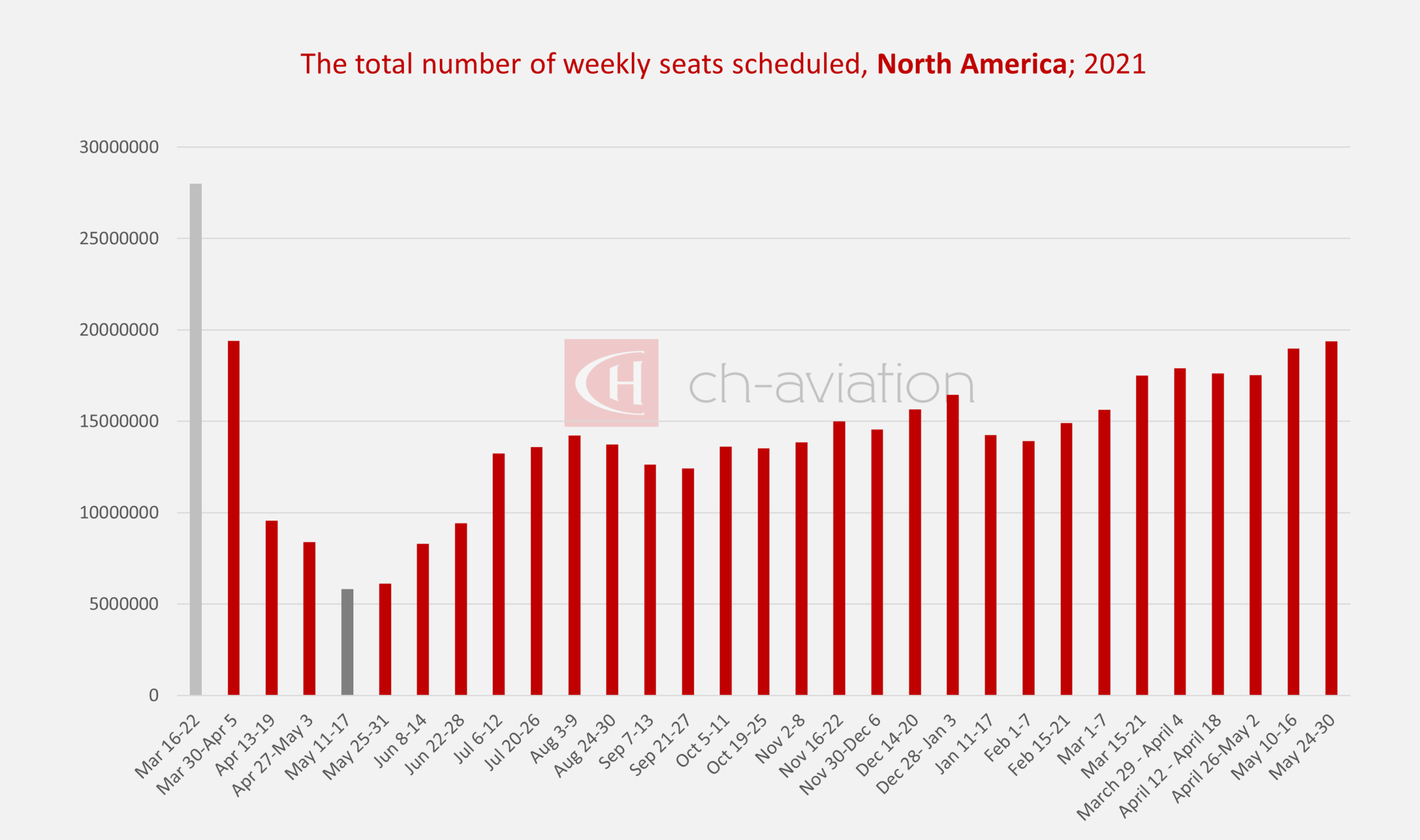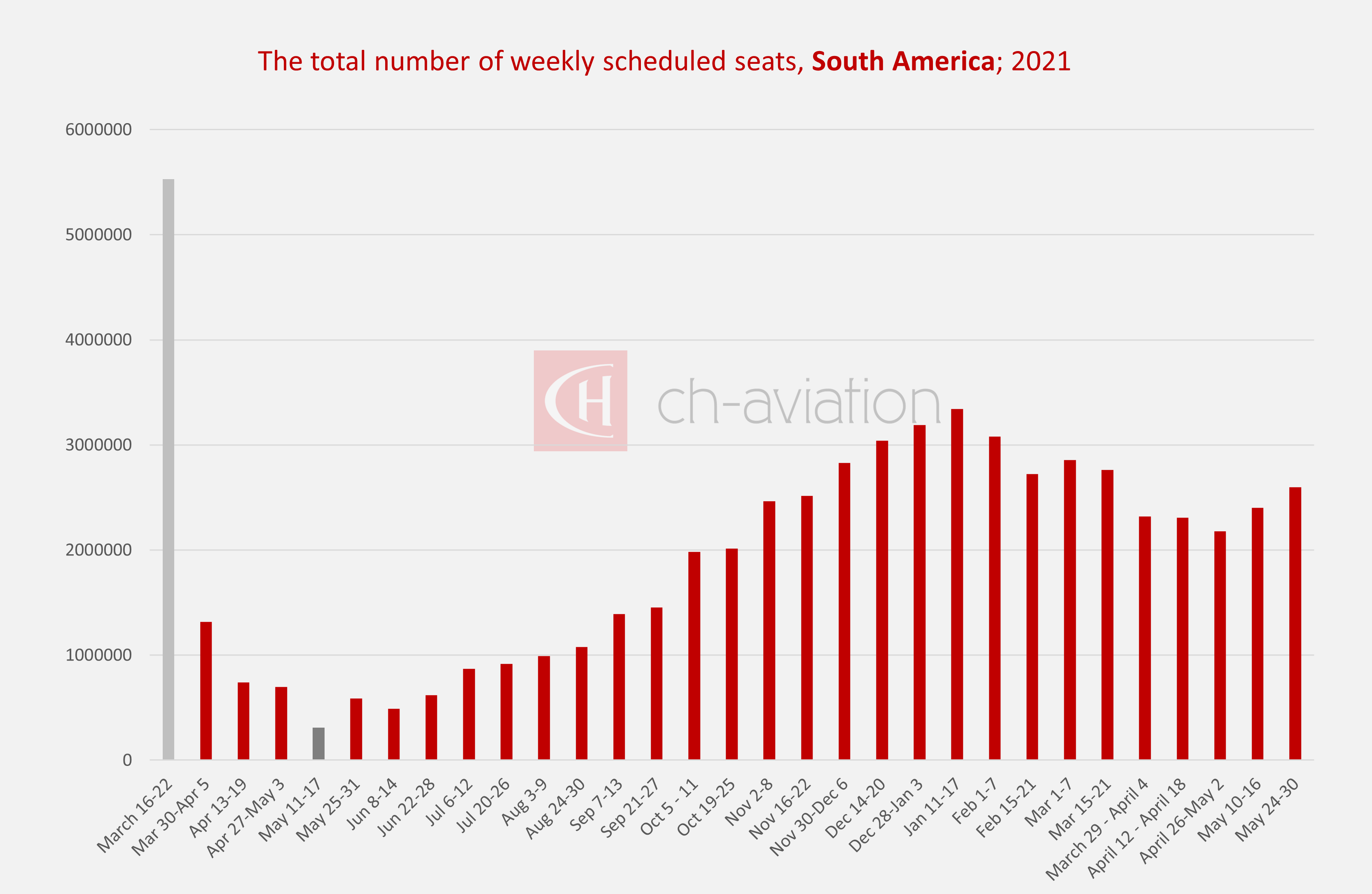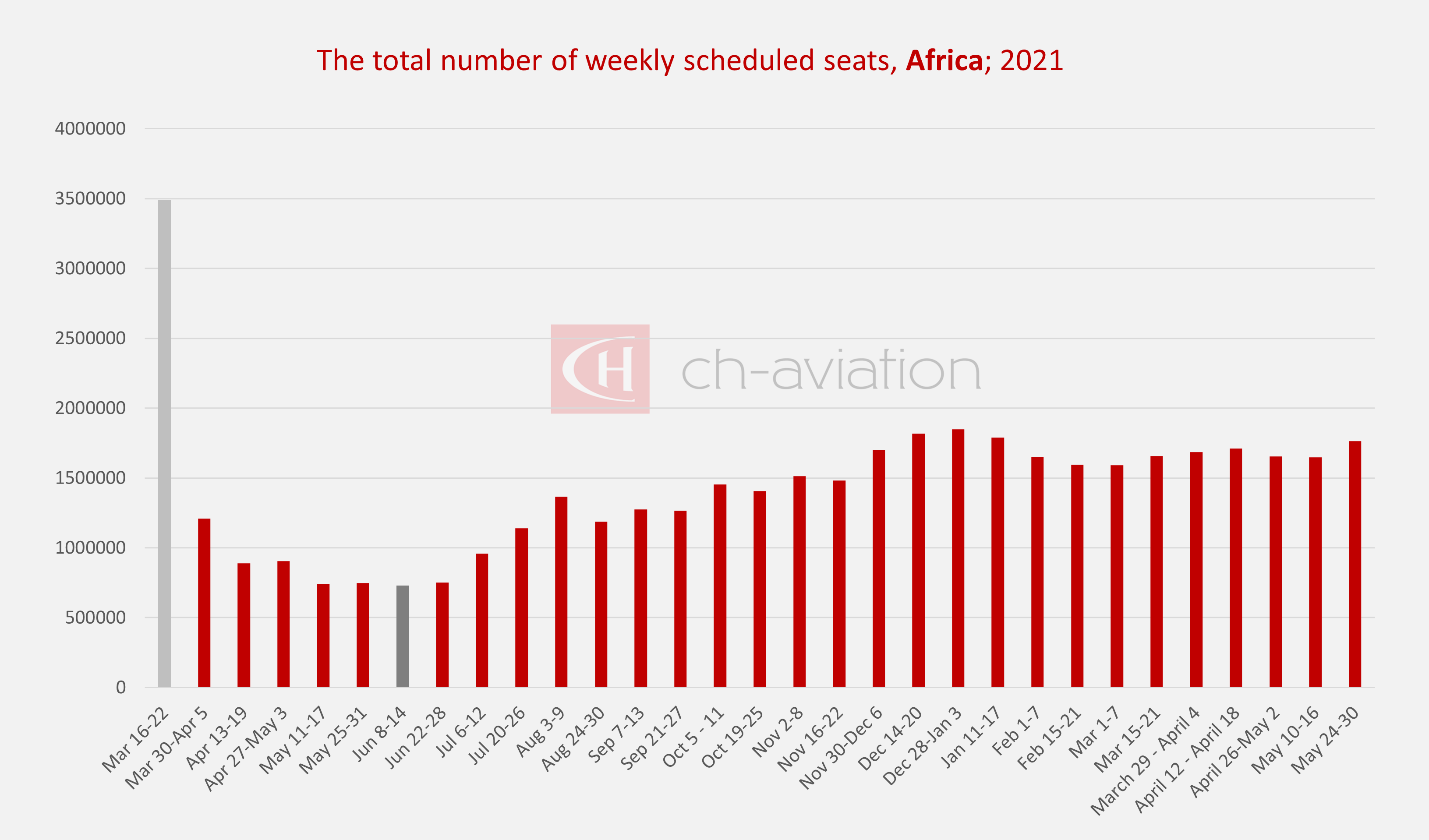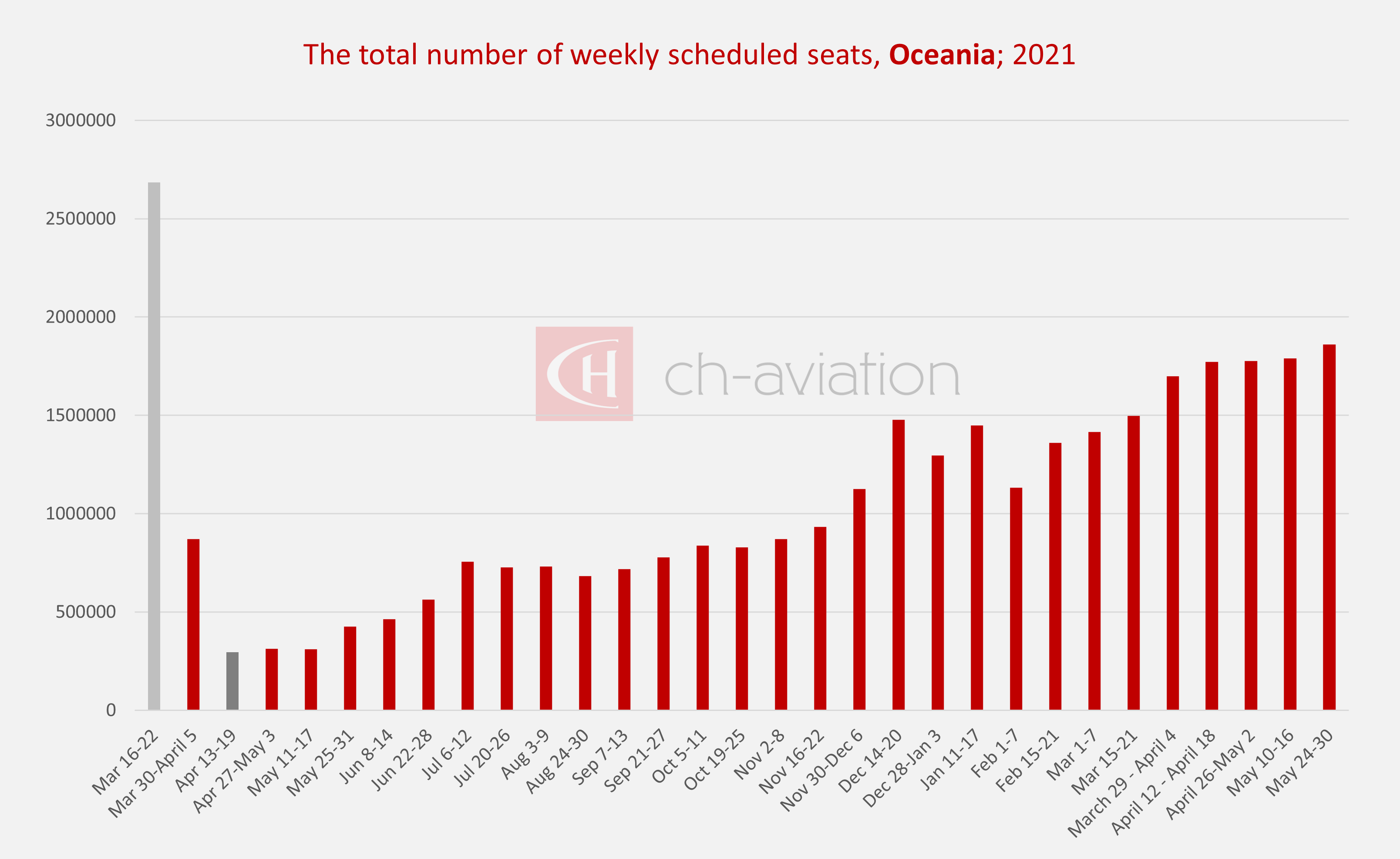May brings another dose of optimism and another peak in worldwide capacity numbers. The numbers have been growing since the beginning of February, and the global fleet size currently counts 67.4 million scheduled seats per week.

After reaching a peak in mid-April, and with varying numbers in the first part of the month, the last week of May has brought with it another dose of optimism for Asia, which currently counts 30.9 million scheduled seats per week.

Despite minor fluctuations, North America has been on the recovery path since the beginning of February, with weekly seating capacity now numbering 19.3 million. At the end of May, North America will once more see demand touch numbers it last registered when the pandemic struck in late March/early April last year.

May in Europe has seen a strong resurgence in demand, especially in the month’s final week. Currently, European capacity counts 8 million weekly scheduled seats, an increase of 33% compared to the last week of April.

May’s rising numbers are also cause for celebration in South America, where capacity – which currently counts 2.5 million scheduled seats – is again climbing.

Sadly, the number of scheduled seats in the African market has continued to stagnate, albeit with a slight increase during the last week of May. The continent’s current capacity counts 1.7 million scheduled seats.

Since the beginning of February, Oceania has been trending upwards, with capacity numbers showing strong sustained growth. The end of May has seen the highest number of scheduled seats since the pandemic’s outbreak and currently counts 1.8 million seats/week.

As of March 2021, Volaris from Mexico has the highest load factor of 86.88%, making it the leader on the Top 25 Airlines list. The airline with the lowest load factor continues to be Scoot from Singapore, with 11.83%.




